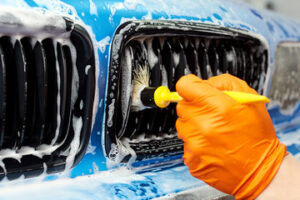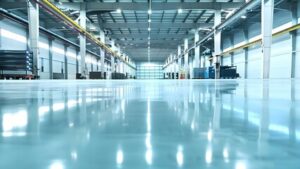Profitable car wash owners know that a clean and organized facility not only looks good, but it also makes customers feel safe. This is why they keep bays and business amenities clean, repaint walls as needed, and post signs to rest rooms, services, and offices.

The car wash at Auto Spa is a modern, mechanized system that cleans vehicles with high-pressure cleaning machines and spray injection systems. It also features a wide variety of wash packages to fit every need. The employees take care to thoroughly clean each vehicle and offer a high level of customer service. Moreover, the establishment provides a comfortable waiting area and complimentary snacks for its customers. Contact Kolby’s Auto Spa for professional help.
This unique mechanized car washing concept allows customers to enjoy an efficient and thorough cleaning of their vehicles in a short amount of time. Its high-quality cleaning products remove dirt, grime, and other debris that accumulate on the surface of vehicles over time. This includes bug splatter, road film, brake dust, and other debris. It also features a two-stage buff to remove minor scratches and dullness from the paint.
During the cleaning process, the vehicle’s exterior is gently washed using wash soap that’s specifically formulated for automotive paint. Then, the technician applies a clay bar to the vehicle’s surface to lift impurities such as tar and industrial fallout. After a few gentle wipes, the paint is thoroughly rinsed and dried with a microfiber towel to prevent water spots.
The final step is to apply Simoniz Double Bond, a durable and protective sealant that helps restore the gloss and clarity of a vehicle’s finish. The product also contains a polymer to help improve water beading and sheeting, and reduce corrosion.
Interior Premium Treatment
Over a period of time, dust & dirt contaminates accumulate in various corners inside the car making windows & mirrors foggy. A quick wipe with a cloth does not help maintain the cleanliness & fresh look for long. This is when our interior premium treatment comes in handy to ensure that your cars interiors are spotless and clean for a longer duration of time. Foam it cleaner solution is applied on all seats, windows and dashboards to eliminate residue & grime. Plastic & vinyl surfaces are treated with spray dresser to enhance their surface finish & shine.
Leather seats are conditioned to protect and moisturize them from cracking or fading. Carpet fibers are cleaned and groomed to keep them looking new. Similarly, roof linings are treated with special conditioners to prevent them from drying or shrinking.
Ceramic Coating
A high-quality ceramic coating provides a durable, scratch-resistant layer that protects your car from swirl marks and other imperfections. When applied correctly by a trained professional, ceramic coatings can help to keep your vehicle looking sleek and free from flaws for years. Ultimately, this can help to increase the resale value of your vehicle.
Unlike traditional waxes and sealants, ceramic coatings provide an extra level of protection that helps to prevent dirt and debris from damaging your paintwork. This durable coating works to create a barrier against water spots, road grime, and even bird droppings, helping your car to stay cleaner for longer. Additionally, this coating can help to protect your paintwork from harsh UV rays that may cause damage over time.
The best ceramic coatings offer exceptional hydrophobic properties that work to repel water, dust, and mud. The protective nature of these coatings can help to improve your driving experience and make cleaning your car easier than ever before. This advanced technology also helps to eliminate the need for other forms of surface protection like paint protection film, saving you money in the long run and ensuring that your vehicle is well-maintained throughout its lifetime.
Choosing the right ceramic coating depends on your specific needs and preferences, but most products will work well on both matte and satin finishes. In order to ensure that the ceramic coating will work on your specific finish, it is important to test it out first on a small section of your vehicle.
To apply a ceramic coating, your car will need to be clean and dry before the process begins. The detailer will use a clay bar to remove any contaminants from the surface of your vehicle before uniformly applying the product across the entire painted area. After the ceramic coating has been applied, it will need to be cured for a few days before it can be used.
The best ceramic coatings will last for 3-5 years or more depending on the product, the quality of application, and other factors. To extend the life of your ceramic coating, it is essential to follow a regular maintenance routine. This includes washing your car with non-abrasive products, avoiding harsh chemicals, and scheduling regular inspections and touch-ups as needed.
Window Tinting
If your car is always hot or you get blinding glare when you drive, window tint can help. It’s an easy way to improve your comfort, protect the interior of your vehicle and boost privacy. It also blocks more than 99% of harmful UV rays, so you can reduce the risk of skin cancer. We offer a wide range of shades to match your style, from limo dark to barely visible. We use premium brand window tint, backed by lifetime warranties.
CoolVu’s automotive tints preserve the appearance of fabrics, leather and plastics by blocking harmful UV rays which can cause fading or degradation over time. They are a world class technology backed by professionals who love what they do and have one goal: to extend the life of your vehicle interior and enhance its beauty.
XPEL window film takes vehicle protection to the next level. It uses ceramic particles to reflect up to 98% of infrared heat, keeping your car cooler than ever before. This means you can save money on air conditioning and stay comfortable in the summer. It also blocks 99% of harmful UV rays which can damage your interior, and it prevents the deterioration of your upholstery and interior surfaces.
It offers a sleek, stylish look that complements any vehicle and provides added privacy. Window tinting is also a deterrent for potential thieves, because it can slow down the process of breaking into your vehicle and can make it more difficult to see valuables inside the vehicle.
Unlike architectural window tint, automotive tint is designed to shrink and fit the curve of your windows perfectly. This creates a more secure seal and helps keep the glass from shattering in the event of an accident or break in. Automotive tint also absorbs the heat and disperses it, whereas architectural window tint only reflects it.
Adding tint to your vehicle is legal in most states, provided it meets local laws and regulations. Our experts are trained to install the film correctly so you can enjoy its many benefits for years to come.



